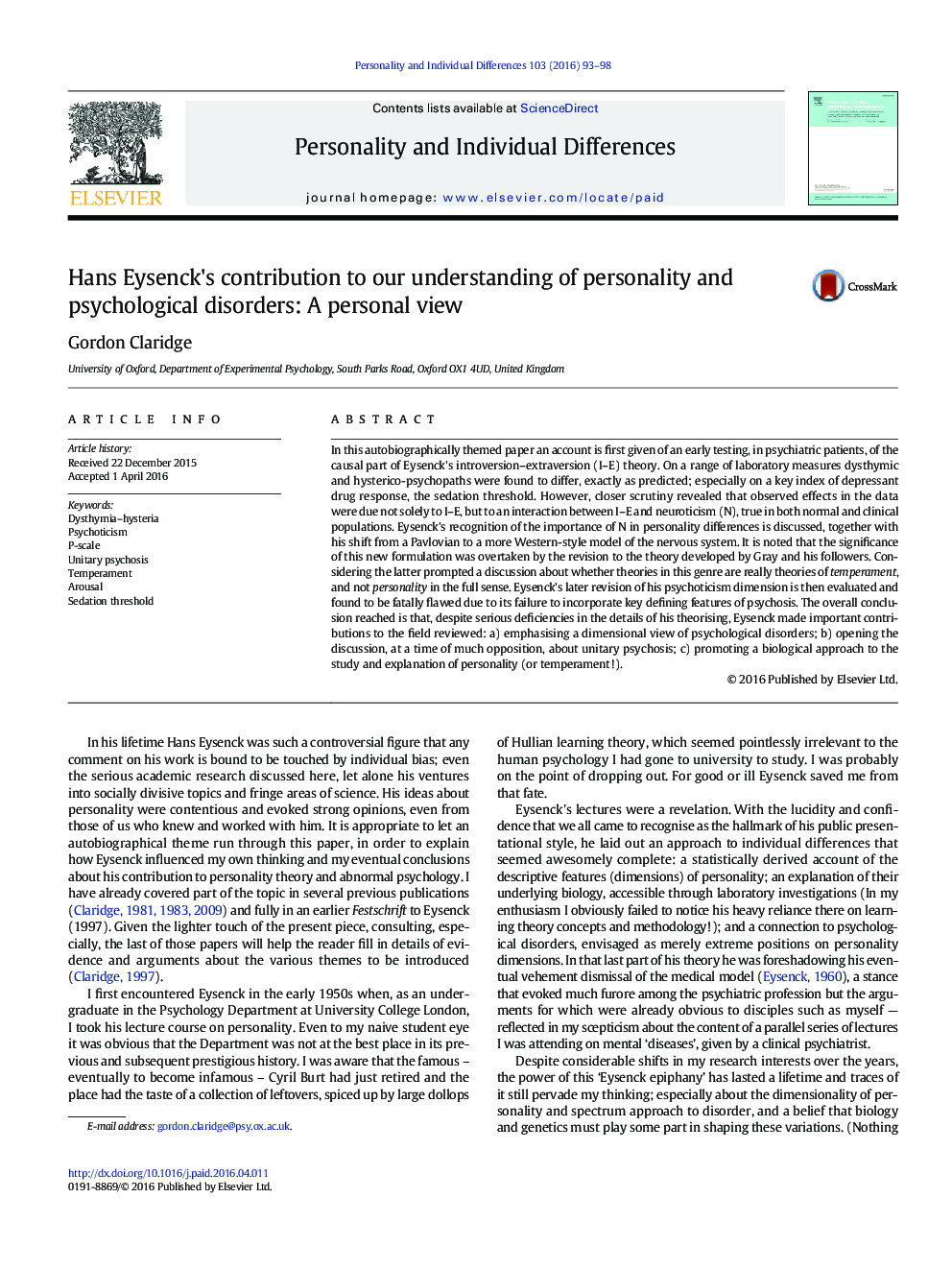| Article ID | Journal | Published Year | Pages | File Type |
|---|---|---|---|---|
| 5036253 | Personality and Individual Differences | 2016 | 6 Pages |
In this autobiographically themed paper an account is first given of an early testing, in psychiatric patients, of the causal part of Eysenck's introversion-extraversion (I-E) theory. On a range of laboratory measures dysthymic and hysterico-psychopaths were found to differ, exactly as predicted; especially on a key index of depressant drug response, the sedation threshold. However, closer scrutiny revealed that observed effects in the data were due not solely to I-E, but to an interaction between I-E and neuroticism (N), true in both normal and clinical populations. Eysenck's recognition of the importance of N in personality differences is discussed, together with his shift from a Pavlovian to a more Western-style model of the nervous system. It is noted that the significance of this new formulation was overtaken by the revision to the theory developed by Gray and his followers. Considering the latter prompted a discussion about whether theories in this genre are really theories of temperament, and not personality in the full sense. Eysenck's later revision of his psychoticism dimension is then evaluated and found to be fatally flawed due to its failure to incorporate key defining features of psychosis. The overall conclusion reached is that, despite serious deficiencies in the details of his theorising, Eysenck made important contributions to the field reviewed: a) emphasising a dimensional view of psychological disorders; b) opening the discussion, at a time of much opposition, about unitary psychosis; c) promoting a biological approach to the study and explanation of personality (or temperament!).
